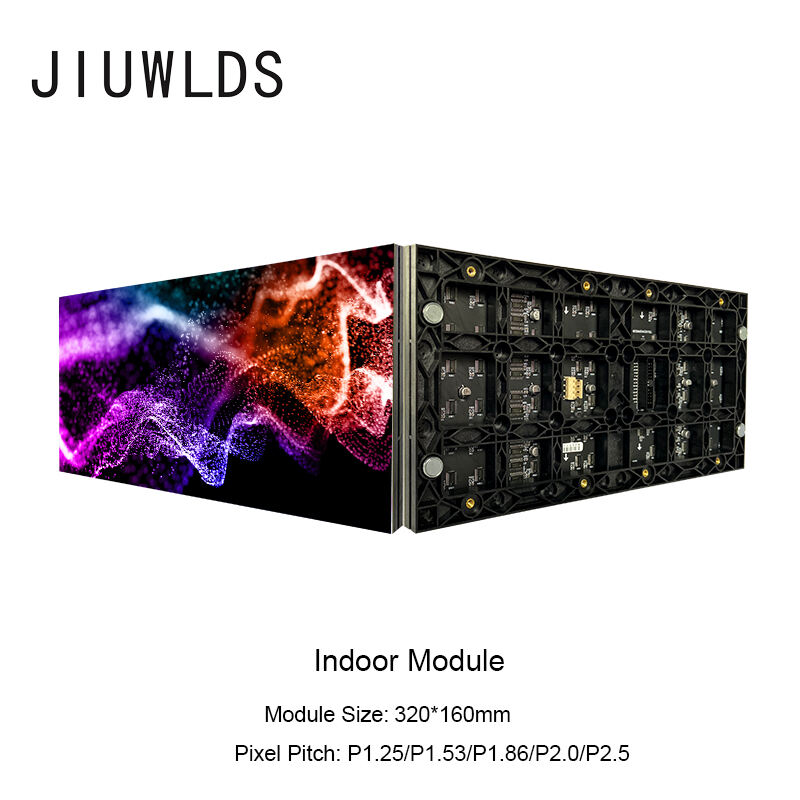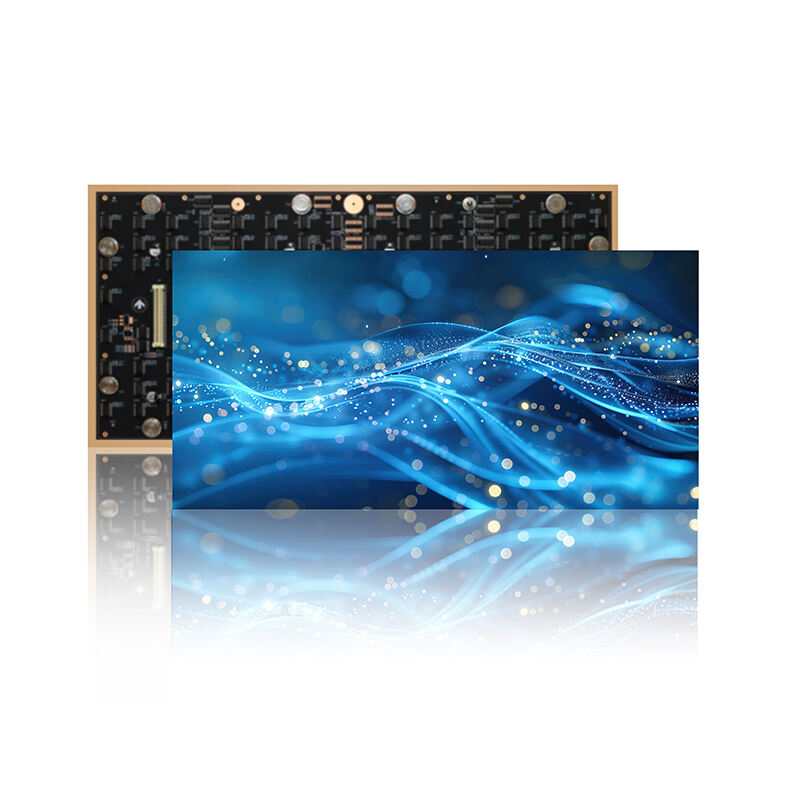The Evolution of Outdoor Advertising LED Display Screens in Modern Marketing
From Static Billboards to Dynamic LED Screens: A Historical Shift
Early Outdoor Advertising: Limitations of Traditional Methods
Traditional billboards have long been a staple in outdoor advertising, but they came with inherent limitations. The static nature of these billboards meant that any changes in the ad required both substantial time and resources for design and installation. This inflexibility hindered the ability of marketers to quickly adapt their messages to current trends or events. As a result, opportunities for real-time communication with consumers were largely missed. Studies have shown that digital alternatives drastically improve engagement, with a 35-40% higher recall rate compared to static billboards, highlighting the static medium's limitations.
The Digital Revolution: LED's Entry into Public Spaces
The advent of LED technology has fundamentally transformed outdoor advertising, propelling a digital revolution in public spaces. LED displays enable the creation of vibrant and dynamic advertisements that capture attention more effectively than their static predecessors. Early adopters in urban centers like New York and Tokyo quickly embraced this technology, facilitating rapid market growth. Data suggests environments featuring LED displays see a threefold increase in viewer engagement compared to traditional methods. The ability to incorporate movement and vivid colors has truly revolutionized outdoor advertising, making it a more engaging experience for consumers.
Key Milestones in Outdoor Advertising Technology
Significant milestones have shaped the evolution of outdoor advertising technology over the past two decades. The introduction of the first LED billboard in the late 1990s marked a pivotal moment, paving the way for today’s sophisticated displays. Improvements in image resolution and display technology have continuously enhanced the advertising landscape, enabling clear and impactful visuals. A timeline of development milestones includes the shift to full-color capacity in early 2000s and the adoption of interactive digital displays in the 2010s, each contributing to the dynamic and immersive outdoor advertising environment we witness today.
Technological Innovations Driving LED Display Adoption
Advantages of Rental LED Display Solutions
Rental LED displays offer significant cost-effectiveness for businesses engaging in short-term advertising campaigns compared to long-term investments. They allow companies to avoid large upfront expenses and instead allocate budgets flexibly. This adaptability is particularly beneficial for organizations aiming to swiftly respond to changing market trends. For instance, during product launches or special events, renting LED displays can provide immediate visibility and impact without the commitment of owning the equipment. Successful campaigns utilizing rental displays have demonstrated increased customer engagement and brand recognition, thanks to the dynamic and eye-catching content capabilities that rental LED display solutions offer.
High-Brightness Outdoor Advertising Displays
The importance of brightness in outdoor advertising is paramount for ensuring visibility across different lighting conditions. High-brightness LED displays effectively capture attention in daylight and varied weather. Advances in LED technology have led to displays with enhanced brightness and contrast, crucial for maintaining image clarity and message readability. Studies have shown that brighter displays significantly improve viewer retention and engagement compared to standard technologies. This is particularly valuable in bustling urban environments where competition for consumer attention is fierce, making high-brightness displays an indispensable tool in effective outdoor advertising.
Modular Design for Seamless Splicing
Modular designs in LED displays offer unparalleled benefits due to their ease of setup and scalability, fitting diverse advertising environments. The modular approach allows for quick installation and configuration changes, accommodating different screen sizes and resolutions. These systems also streamline maintenance processes, reducing downtime and ensuring that advertising content remains uninterrupted. Notable case studies illustrate the efficiency of modular LED designs; they show reduced costs and improved operational efficiency. This architecture supports seamless splicing, leading to cohesive and expansive digital canvases ideal for impactful advertising campaigns across varying spaces.
Strategic Benefits of Modern LED Advertising Screens
Real-Time Content Updates for Targeted Campaigns
Modern LED advertising screens offer unparalleled flexibility with their ability to change content in real-time, greatly enhancing targeted advertising efforts. This feature allows businesses to respond instantly to market trends and consumer behaviors, ensuring advertisements remain relevant and engaging. For instance, a clothing brand can adjust its campaigns to promote raincoats during unexpected rain showers. According to a report, real-time updates increase audience engagement by 30%, showcasing the importance of responsive strategies in capturing consumer attention. Brands like Coca-Cola and McDonald's have effectively utilized this technology to adapt their promotional content, highlighting seasonal offers or trending products, thus boosting their advertising impact.
Weather Resistance in Outdoor Advertising Displays
The resilience of modern LED screens to various weather conditions is a key innovation, ensuring the durability and reliability of outdoor advertising displays. Enhanced weather-proofing technologies have been developed to withstand rain, wind, and extreme temperatures without compromising display quality, which is crucial for maintaining continuous advertising visibility. Studies show that weather-resistant displays can last up to 10 years, significantly longer than some traditional outdoor advertising solutions. This longevity builds trust with businesses, knowing that their investment is protected against environmental factors, providing a reliable platform for constant advertisement exposure regardless of the climate.
Energy Efficiency and Operational Cost Savings
Modern LED displays offer significant energy efficiency compared to traditional billboards, reflecting both cost savings and environmental benefits. As per market analysis, LED screens consume up to 75% less energy than fluorescent-lit billboards, reducing electricity expenses substantially. This efficiency not only cuts operational costs but also aligns with sustainable business practices by minimizing carbon footprints. Large-scale implementations have demonstrated energy savings that contribute to significant financial benefits over time, showcasing how energy-efficient technology can support profitable and eco-friendly advertising strategies.
Current Market Trends in LED Advertising Technology
Rise of Programmatic Digital Out-of-Home (DOOH)
Programmatic advertising in digital outdoor displays, known as Digital Out-of-Home (DOOH), is revolutionizing the way brands connect with consumers. This approach automates the buying and placement of ads using data analytics to target specific audiences more effectively. As reported, the global digital signage market is projected to reach USD 45.94 billion by 2030, growing at a CAGR of 8.1% from 2025 to 2030, reflecting the increasing adoption of programmatic DOOH. This growth challenges traditional outdoor marketing, which lacks the ability to dynamically adjust based on real-time viewer engagement and location-based data. As programmatic ad spending continues to rise, it empowers advertisers with flexibility and precision in reaching their target demographics.
Integration with Mobile and AR Technologies
The integration of Augmented Reality (AR) technologies with LED advertising screens is transforming viewer interaction. AR offers immersive experiences that engage audiences directly with the advertising content. For example, AR campaigns that allow consumers to interact with virtual elements superimposed over real-world environments have proven successful. Moreover, mobile devices facilitate targeted campaigns and valuable data collection, enabling advertisers to refine their strategies based on user engagement and interaction rates. An example of effective AR integration is a campaign where users could view and interact with 3D products through their mobile devices, alongside traditional LED display advertisements, creating a seamless hybrid experience. Such innovations not only enhance engagement but significantly improve advertising effectiveness.
Sustainable Practices in LED Screen Manufacturing
Manufacturers are increasingly adopting sustainable practices in LED screen production to meet a growing demand for eco-friendly products. Steps include using recyclable materials and reducing energy consumption during manufacturing processes. These efforts benefit both the environment and businesses, enhancing brand image and consumer perceptions. Brands with a strong commitment to sustainability are often viewed more favorably by consumers, reinforcing loyalty and trust. Industry movements towards eco-friendly materials are evident, with rapid advancements in reducing carbon footprints and improving resource efficiency in production. As sustainability becomes a core aspect of brand identity, the manufacturing of LED screens that adhere to eco-friendly standards positions businesses at a competitive advantage in the marketplace.
Future Directions for Outdoor LED Advertising
AI-Driven Personalization in Dynamic Displays
AI's integration into outdoor LED advertising is setting a new standard in personalized marketing. By analyzing real-time data and consumer behaviors, AI can dynamically adjust content to fit the specific interests of an audience at any given moment. This transformation allows advertisers to maximize their return on investment (ROI) while boosting customer engagement. For example, a study suggests that personalized advertisements are 50% more likely to engage consumers than static ads. Experts predict that AI will become increasingly influential in advertising, as brands seek to optimize every consumer interaction and achieve precise targeting.
Interactive LED Walls and Audience Engagement
Interactive LED walls are revolutionizing audience engagement by offering immersive and memorable brand experiences. These advanced displays enable users to interact directly with ads, enhancing engagement through touch-responsive panels and motion sensors. Technologies such as gesture recognition and augmented reality (AR) are paving the way for innovative campaigns. A notable example is Coca-Cola's 'Share a Coke' campaign, which used LED walls to allow users to customize cans with their names, significantly boosting audience interaction and brand recall.
Ultra-High Resolution Advancements (P1.25-P4 Pixel Pitches)
Ultra-high-resolution LED displays are becoming a cornerstone of outdoor advertising, largely due to advancements in pixel pitch technology. Pixel pitch, defined as the distance between the centers of two adjacent pixels, plays a critical role in determining display quality and viewer experience. As the demand for clearer and sharper images grows, advancements in pixel pitch, reaching pitches as fine as P1.25, cater to these expectations by providing superior brightness and color accuracy. Research shows that displays with finer pixel pitches are more likely to capture viewer attention and keep audiences engaged, aligning with market demands for high-definition visual experiences.







 Hot News
Hot News